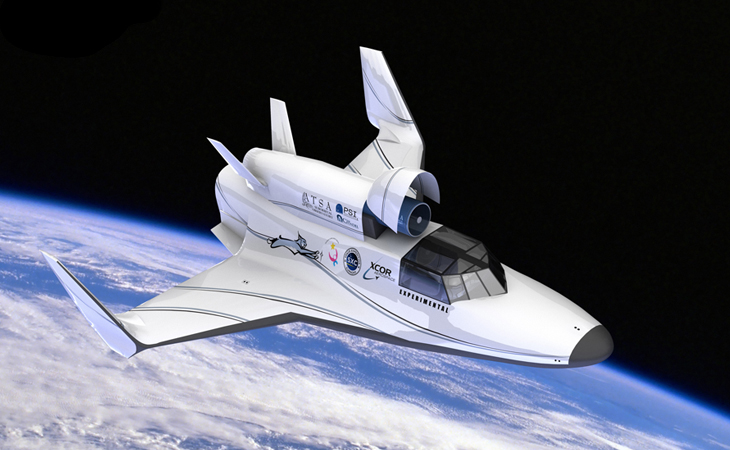Science Experiments In Space

XCOR Aerospace
There are several companies vying for tourist dollars in the nascent industry of space tourism. Today at the fall meeting of the American Geophysical Union in San Francisco, representatives from two of those companies talked to scientists about their plans to host not just thrill-seekers, but also science experiments.
One of the advantages the two presenters mentioned was the opportunity to load and retrieve payloads much more quickly than NASA or others can offer. This could be a big benefit to a variety of fields, especially biology, they indicated.
The first talk was by Will Pomeranz from Virgin Galactic. He gave an overview of the research opportunities their flights will provide. They plan to have two different options. The first is a sub-orbital flight lasting about two hours that offers about three or four minutes of weightlessness. The vehicle will be attached to another plane, which carries the space vessel to a certain height before releasing that vessel for its space journey. Virgin Galactic plans to be able to carry several passengers and payloads at a time. For the future, they’re also planning to build a vehicle that will orbit the earth.
Pomeranz said that they’re developing details that will be vital to scientists, including a very specific profile of the g-forces of the flight pattern and expanding the possibilities of what they can offer to scientists – orienting the craft, or developing a way to offer outside-the-craft experimental access.
Khaki Rodway from XCOR Aerospace spoke next. She discussed their rocket-based space effort. Their craft has room for a pilot and one more item – either a person or a payload. Their flight takes about a half hour, and reaches its highest point of about 62 miles above sea level about five minutes after takeoff. XCOR flights also glide back down to the surface, reaching a maximum g-force of 4 Gs.
Rodway explained that there are multiple locations where payloads can be attached to the craft. One option is next to the pilot. Other locations include a pod on the top side of the rocket.
One interesting experiment she discussed was a water bridge. This is a string of water that forms a connection between two beakers, like a little bridge. This intriguing phenomenon was originally described in 1893 and usually requires the application of electricity. Rodway said that scientists think that in microgravity, they might be able to coax the bridge to form again after it breaks.
For those of you who wish to send an experiment into space, XCOR offers a payload users guide.
The area of private companies sending satellites, experiments and tourists into space promises to develop over the coming decades and should be an interesting one to watch.
Please stay tuned to Inside Science all week for more updates from San Francisco!

